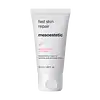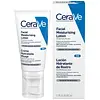What's inside
What's inside
 Key Ingredients
Key Ingredients

 Benefits
Benefits

 Concerns
Concerns

 Ingredients Side-by-side
Ingredients Side-by-side

Water
Skin ConditioningDecyl Oleate
EmollientPropylene Glycol
HumectantEthylhexyl Methoxycinnamate
UV AbsorberC12-16 Alcohols
EmollientGlycerin
HumectantBorago Officinalis Extract
EmollientBiosaccharide Gum-2
Skin ConditioningButyrospermum Parkii Butter
Skin ConditioningTocopheryl Acetate
AntioxidantButylene Glycol Dicaprylate/Dicaprate
EmollientCyclomethicone
EmollientLanolin
EmollientButyl Methoxydibenzoylmethane
UV AbsorberAscorbyl Glucoside
AntioxidantGlyceryl Stearate Citrate
EmollientSodium Hyaluronate
HumectantHydrolyzed Collagen
EmollientHydrogenated Lecithin
EmulsifyingCentella Asiatica Extract
CleansingGlycyrrhiza Glabra Root Extract
BleachingRosmarinus Officinalis Leaf Extract
AntimicrobialHelianthus Annuus Seed Oil
EmollientHydrolyzed Soy Protein
HumectantHydrolyzed Wheat Protein
Skin ConditioningPhospholipids
Skin ConditioningUbiquinone
AntioxidantHydroxydecyl Ubiquinone
AntioxidantPalmitic Acid
EmollientThioctic Acid
AntioxidantPhytic Acid
Retinyl Palmitate
Skin ConditioningSodium Carboxymethyl Betaglucan
Lactic Acid
BufferingSerine
MaskingSodium Lactate
BufferingSorbitol
HumectantUrea
BufferingTocopherol
AntioxidantTripeptide-1
Skin ConditioningAllantoin
Skin ConditioningDimethicone
EmollientHydrogenated Polyisobutene
EmollientPolyglyceryl-10 Stearate
Skin ConditioningSodium Chloride
MaskingXanthan Gum
EmulsifyingSodium Acrylates Copolymer
Alcohol Denat.
AntimicrobialPentylene Glycol
Skin ConditioningButylene Glycol
HumectantCaprylyl Glycol
EmollientBenzoic Acid
MaskingImidazolidinyl Urea
PreservativePhenoxyethanol
PreservativeMethylparaben
PreservativePropylparaben
PreservativeEthylparaben
PreservativeParfum
MaskingWater, Decyl Oleate, Propylene Glycol, Ethylhexyl Methoxycinnamate, C12-16 Alcohols, Glycerin, Borago Officinalis Extract, Biosaccharide Gum-2, Butyrospermum Parkii Butter, Tocopheryl Acetate, Butylene Glycol Dicaprylate/Dicaprate, Cyclomethicone, Lanolin, Butyl Methoxydibenzoylmethane, Ascorbyl Glucoside, Glyceryl Stearate Citrate, Sodium Hyaluronate, Hydrolyzed Collagen, Hydrogenated Lecithin, Centella Asiatica Extract, Glycyrrhiza Glabra Root Extract, Rosmarinus Officinalis Leaf Extract, Helianthus Annuus Seed Oil, Hydrolyzed Soy Protein, Hydrolyzed Wheat Protein, Phospholipids, Ubiquinone, Hydroxydecyl Ubiquinone, Palmitic Acid, Thioctic Acid, Phytic Acid, Retinyl Palmitate, Sodium Carboxymethyl Betaglucan, Lactic Acid, Serine, Sodium Lactate, Sorbitol, Urea, Tocopherol, Tripeptide-1, Allantoin, Dimethicone, Hydrogenated Polyisobutene, Polyglyceryl-10 Stearate, Sodium Chloride, Xanthan Gum, Sodium Acrylates Copolymer, Alcohol Denat., Pentylene Glycol, Butylene Glycol, Caprylyl Glycol, Benzoic Acid, Imidazolidinyl Urea, Phenoxyethanol, Methylparaben, Propylparaben, Ethylparaben, Parfum
Water
Skin ConditioningGlycerin
HumectantCaprylic/Capric Triglyceride
MaskingNiacinamide
SmoothingCetearyl Alcohol
EmollientPotassium Phosphate
BufferingCeramide NP
Skin ConditioningCeramide AP
Skin ConditioningCeramide EOP
Skin ConditioningCarbomer
Emulsion StabilisingDimethicone
EmollientCeteareth-20
CleansingBehentrimonium Methosulfate
Sodium Lauroyl Lactylate
EmulsifyingSodium Hyaluronate
HumectantCholesterol
EmollientPhenoxyethanol
PreservativeDisodium EDTA
Dipotassium Phosphate
BufferingCaprylyl Glycol
EmollientPhytosphingosine
Skin ConditioningXanthan Gum
EmulsifyingPolyglyceryl-3 Diisostearate
EmulsifyingEthylhexylglycerin
Skin ConditioningWater, Glycerin, Caprylic/Capric Triglyceride, Niacinamide, Cetearyl Alcohol, Potassium Phosphate, Ceramide NP, Ceramide AP, Ceramide EOP, Carbomer, Dimethicone, Ceteareth-20, Behentrimonium Methosulfate, Sodium Lauroyl Lactylate, Sodium Hyaluronate, Cholesterol, Phenoxyethanol, Disodium EDTA, Dipotassium Phosphate, Caprylyl Glycol, Phytosphingosine, Xanthan Gum, Polyglyceryl-3 Diisostearate, Ethylhexylglycerin
 Reviews
Reviews

Ingredients Explained
These ingredients are found in both products.
Ingredients higher up in an ingredient list are typically present in a larger amount.
Caprylyl Glycol is a humectant and emollient, meaning it attracts and preserves moisture.
It is a common ingredient in many products, especially those designed to hydrate skin. The primary benefits are retaining moisture, skin softening, and promoting a healthy skin barrier.
Though Caprylyl Glycol is an alcohol derived from fatty acids, it is not the kind that can dry out skin.
This ingredient is also used as a preservative to extend the life of products. It has slight antimicrobial properties.
Learn more about Caprylyl GlycolDimethicone is a type of synthetic silicone created from natural materials such as quartz.
What it does:
Dimethicone comes in different viscosities:
Depending on the viscosity, dimethicone has different properties.
Ingredients lists don't always show which type is used, so we recommend reaching out to the brand if you have questions about the viscosity.
This ingredient is unlikely to cause irritation because it does not get absorbed into skin. However, people with silicone allergies should be careful about using this ingredient.
Note: Dimethicone may contribute to pilling. This is because it is not oil or water soluble, so pilling may occur when layered with products. When mixed with heavy oils in a formula, the outcome is also quite greasy.
Learn more about DimethiconeGlycerin is already naturally found in your skin. It helps moisturize and protect your skin.
A study from 2016 found glycerin to be more effective as a humectant than AHAs and hyaluronic acid.
As a humectant, it helps the skin stay hydrated by pulling moisture to your skin. The low molecular weight of glycerin allows it to pull moisture into the deeper layers of your skin.
Hydrated skin improves your skin barrier; Your skin barrier helps protect against irritants and bacteria.
Glycerin has also been found to have antimicrobial and antiviral properties. Due to these properties, glycerin is often used in wound and burn treatments.
In cosmetics, glycerin is usually derived from plants such as soybean or palm. However, it can also be sourced from animals, such as tallow or animal fat.
This ingredient is organic, colorless, odorless, and non-toxic.
Glycerin is the name for this ingredient in American English. British English uses Glycerol/Glycerine.
Learn more about GlycerinPhenoxyethanol is a preservative that has germicide, antimicrobial, and aromatic properties. Studies show that phenoxyethanol can prevent microbial growth. By itself, it has a scent that is similar to that of a rose.
It's often used in formulations along with Caprylyl Glycol to preserve the shelf life of products.
Sodium Hyaluronate is hyaluronic acid's salt form. It is commonly derived from the sodium salt of hyaluronic acid.
Like hyaluronic acid, it is great at holding water and acts as a humectant. This makes it a great skin hydrating ingredient.
Sodium Hyaluronate is naturally occurring in our bodies and is mostly found in eye fluid and joints.
These are some other common types of Hyaluronic Acid:
Learn more about Sodium HyaluronateWater. It's the most common cosmetic ingredient of all. You'll usually see it at the top of ingredient lists, meaning that it makes up the largest part of the product.
So why is it so popular? Water most often acts as a solvent - this means that it helps dissolve other ingredients into the formulation.
You'll also recognize water as that liquid we all need to stay alive. If you see this, drink a glass of water. Stay hydrated!
Learn more about WaterXanthan gum is used as a stabilizer and thickener within cosmetic products. It helps give products a sticky, thick feeling - preventing them from being too runny.
On the technical side of things, xanthan gum is a polysaccharide - a combination consisting of multiple sugar molecules bonded together.
Xanthan gum is a pretty common and great ingredient. It is a natural, non-toxic, non-irritating ingredient that is also commonly used in food products.
Learn more about Xanthan Gum